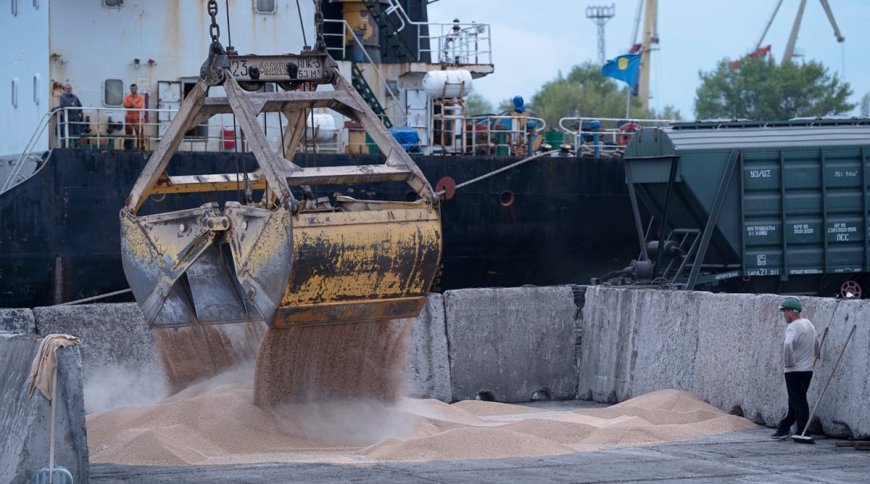Ukraine's Grain Exports in Peril Amidst Russian Attacks: Shipping Industry Braces for Challenges
Amidst Russian attacks on Ukrainian ports crucial for grain exports, the shipping industry faces challenges. Learn how ship owners navigate risks to transport Ukrainian grain despite warnings. Read more.

Ukraine's grain exports face significant hurdles as Russia intensifies attacks on key Ukrainian ports critical for global shipments. With Moscow declaring large parts of the Black Sea unsafe for shipping and even the U.S. warning of potential targeting of ships, the shipping industry is closely monitoring the situation. Despite these threats, some ship owners show interest in transporting Ukrainian grain through the Black Sea, provided the risks can be managed.
John Stawpert, Senior Manager of Environment and Trade for the International Chamber of Shipping, expressed confidence in the shipping industry's resilience against such risks. However, the situation remains complex due to ongoing conflicts, including the Ukrainian war, higher inflation, and rapidly rising interest rates.
Russia's withdrawal from a wartime accord brokered by the U.N. and Turkey further complicated the situation. The accord aimed to provide safeguards for shipping companies during the global food crisis. Ukraine, along with Russia, is a major supplier of wheat, barley, and vegetable oil to developing nations. Despite the challenges, Ukraine has shipped 32.9 million metric tons of grain worldwide this year and supplied 80% of the World Food Program's wheat for humanitarian aid.
Following the collapse of the grain deal, Ukraine took a proactive step by establishing its own temporary shipping corridor and promising compensation for any potential damage incurred during transit.
However, Russia issued warnings that ships navigating certain parts of the Black Sea would be treated as carrying weapons to Ukraine. In response, Ukraine stated that vessels heading to Russian Black Sea ports would be considered carrying military cargo, signaling potential retaliatory measures.
Continued shipments from Ukraine will depend on ship owners obtaining insurance coverage to mitigate risks related to crew safety and potential damage. Ships transporting Ukrainian grain are highly valuable, carrying substantial cargo and crew. Assessments of threat levels have become crucial for ships facing piracy, terrorism, and war zones.
While there remains interest from some ship owners, experts anticipate that insurance underwriters may be hesitant to provide coverage without additional guarantees from the U.N. or another governing body. This uncertainty could create significant challenges for the shipping industry.
David Heindel, Head of the Seafarers Division at the International Transport Workers' Federation, expressed concern over sailors' safety amidst the ongoing fighting and urged consideration of their well-being.
As the situation evolves, some analysts predict that most of Ukraine's grain will find alternative routes through road, rail, and river transport in Europe. However, transportation costs are likely to rise, leading to potential reductions in grain production by Ukrainian farmers.
Ukrainian Foreign Minister Dmytro Kuleba stressed the importance of the Black Sea route, which accounted for 75% of the country's grain exports before the war. Nevertheless, divisions within the European Union complicate matters, with five countries seeking to extend a ban on Ukrainian grain imports due to market oversaturation and depressed prices for their own farmers.
The impact of these challenges extends beyond Ukraine, as high wheat prices have led to increased food insecurity in developing nations. Prices have surged by approximately 17% in the past week, putting immense pressure on populations struggling with access to affordable food.
As the shipping industry navigates these complex waters, the global food crisis remains a matter of concern, with millions of people facing potential hunger if viable solutions are not found.
Also Read: India and UAE Sign Landmark Trade Deal to Settle Transactions in indian Rupees
































































